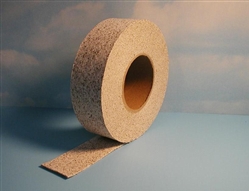I know you got your answer already, but I feel the need to chime in also, I've been burning a princess for a while now and I've seem to finally figure out what she likes for optimal function, now everyones stoves will burn different due to different wood types, moisture, house size, heating envelope ect.. but this stove really like at least a 1/2 " of ash in the bottom, 1" is even better, I feel as though my burns settle into the prime zone when there's a good layer of ash as the base.
When loading the stove (doesn't matter if its just coals, half empty, or what ever)open by-pass, turn the t-stat air up to high and leave it on high for at least a minute, when doing a low burn (smolder box) let what's ever left get glowing again before opening the door, at that I always give it a minute, then crack the door open and let the door latch just rest on the latch piece on the stove body, while its resting I'll grab my splits and gloves, load the stove, shut the door and if the cat is within range close the by-pass but leave the air up. Let the load catch on fire, and be fully burning before dialing the air back down, so members will say its 5 min, others say 10 min, it all depends on the wood, sometimes it only takes me a minute or two, other times it will burn for 15min, its until your satisfied that the load has been baked by flames then turn the stove down for a smolder burn.
This is a new stove, the stove is more heavier duty then some people think, play with the air control and learn how it works, when using this stove there is not instant gratification like a tube stove (shutting air down and getting secondary's) If your playing around to find your "low burn" turn the air down some and wait a few hours, see if its holding the house to temp as is, adjust from there, learn your maximum minimum (the setting where the cat stalls) learn your normal dirty glass air setting, learn your candle wick flames setting. I found it easiest to learn by burning the stove with the t-stat set to 3 o'clock and used that as a base on going up or down, do a full burn at 3 o'clock just to see what it does with a full fire box, and make your adjustments from there. Of course start all fires with the air on high and let the cat go active and the burn set before dialing down.



![[Hearth.com] 2019-20 Blaze King Performance Thread Part 1 (Everything BK) [Hearth.com] 2019-20 Blaze King Performance Thread Part 1 (Everything BK)](https://www.hearth.com/talk/data/attachments/252/252222-f893058186beb9cce9d6120ef9d46f81.jpg?hash=nhWFGYP7GL)
![[Hearth.com] 2019-20 Blaze King Performance Thread Part 1 (Everything BK) [Hearth.com] 2019-20 Blaze King Performance Thread Part 1 (Everything BK)](https://www.hearth.com/talk/data/attachments/252/252223-8750fd866bc7e904b7c7f38073c92e7a.jpg?hash=PJLr7oPHRP)
![[Hearth.com] 2019-20 Blaze King Performance Thread Part 1 (Everything BK) [Hearth.com] 2019-20 Blaze King Performance Thread Part 1 (Everything BK)](https://www.hearth.com/talk/data/attachments/252/252224-90cf06d9343bf259d757ddcab1248d71.jpg?hash=vIvu5BadOO)
![[Hearth.com] 2019-20 Blaze King Performance Thread Part 1 (Everything BK) [Hearth.com] 2019-20 Blaze King Performance Thread Part 1 (Everything BK)](https://www.hearth.com/talk/data/attachments/252/252225-b031aa8616850de21af0918284173ab8.jpg?hash=jXcX5bM1d0)


